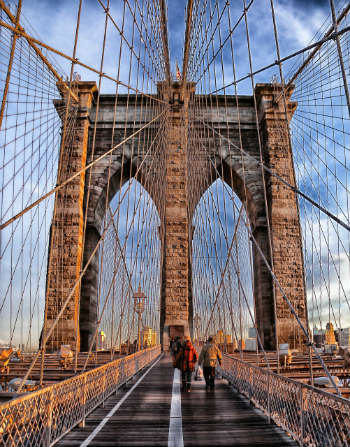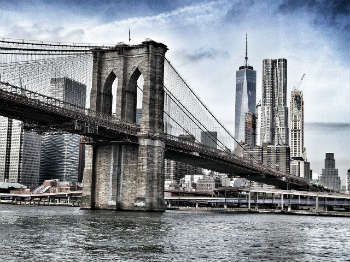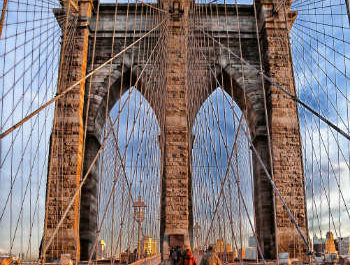Events Leading Up To The Opening Of Brooklyn Bridge
Every day, more than one hundred thousand people travel across the Brooklyn Bridge, which forever provided a connection between Brooklyn and Manhattan. Few individuals traveling across the massive suspension bridge likely know the history and events leading up to the opening of the Brooklyn Bridge.
Plans Begin For Brooklyn Bridge
John Augustus Roebling initially created plans for a suspension bridge in the 1850s. Roebling did not initially get the support and funding to start working on the suspension bridge, connecting Brooklyn and Manhattan.
Roebling, a German immigrant, studied industrial engineering while living in Berlin. After immigrating to the United States, he began garnering a reputation for building suspension bridges that did not fail, as many bridges did in his time.
The vision Roebling had and his plans for the Brooklyn Bridge only became a reality after support from the community and an unlikely source.
Garnering Support From Citizens And A Corrupt Leader
Support for Roebling’s rendered drawings of the world’s longest suspension bridge to connect Brooklyn with Manhattan grew after realizations from citizens and support from a corrupt local leader. Eyewitness To History explains that bitterly cold temperatures during the winter of 1866-1867 reminded Brooklyn residents of the need for a bridge crossing the East River to connect citizens from Brooklyn and New York City. When the East River froze, residents had no easy means of getting to the city.
Pressure from residents possibly played a role in the decision to approve plans for Roebling’s bridge. New York City’s political head, William “Boss” Tweed supported building the bridge, allegedly committing bribery to garner support. Other corruption occurred due to a shoddy wiring issue.
Tragedy Takes Roebling’s Life
Surveying for the Brooklyn Bridge, which ThoughtCo says Roebling originally called “The Great East River Bridge,” began in 1869. ThoughtCo also provides original bridge images.
On a summer day, Brooklyn Bridge designer John Roebling stood on a pier taking final compass readings for the location of the Brooklyn tower. A ferry came too close to the pier, crushing Roebling’s toes.
It is believed that he did not even scream, but instead “went on barking out orders to his workers,” while workers freed his foot. When a physician recommended amputation of his crushed foot, Roebling refused, saying that soaking his foot in water would help. He died a month later of tetanus.
Lives Taken While Building The Bridge
Roebling was not the only person to suffer injury or die as a result of building the bridge.
John’s son, Washington Roebling, took over leading the construction. Washington Roebling was among the several workers who fell ill from “Caisson’s Disease,” contributed to not decompressing after working underwater in the watertight chambers called “Caissons.” He directed the construction from his bed, leaving his wife Emily to meet with engineers carrying out the actual Brooklyn Bridge construction.
Although no exact account exists, Bright Hub Engineering turns to a booklet for details, indicating that twenty men died during the construction of Brooklyn Bridge.
Opening Of The Eighth Wonder Of The World
Most people never saw anything like the construction of the Brooklyn Bridge, as construction showed just how massive the bridge would be upon completion. Towers rose more than 300 feet above water level, astounding residents and spectators watching the construction. Massive cables, 14,000 feet of wire and huge cast iron chains helped support the bridge.
Fanfare for opening the bridge on May 24, 1883, was widespread, with New York Governor Grover Cleveland and President Chester A. Arthur in attendance, along with 150,000 people celebrating and watching fireworks.
The tedious work spanned 14 years and two generations, with the finished construction dubbed as “Eighth Wonder of the World” connecting horse and buggy riders and pedestrians across the East River.







